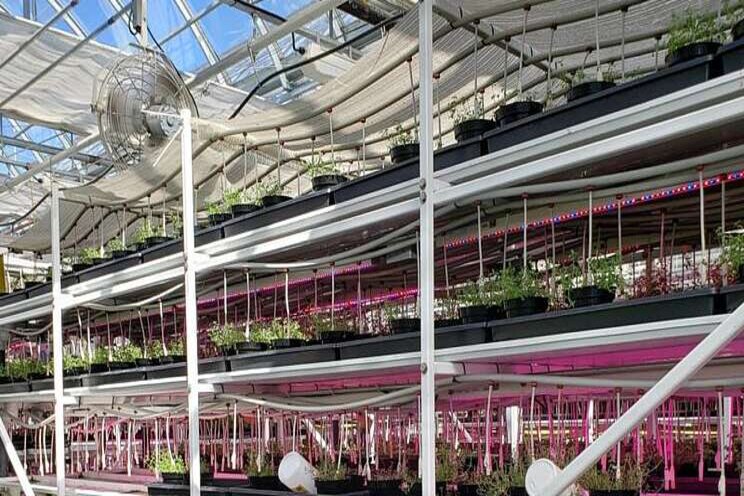Challenges of growing vertically in greenhouses
Added on 06 July 2021

Vertical farming usually refers to the production of crops indoors in multi-stacked layers with LED lighting. As this emerging industry continues to expand, there is also interest in vertical farming in greenhouses, especially for edible crops such as leafy greens and herbs. There is a wide range of vertical farming approaches for greenhouse cultivation, with various degrees of sophistication, including use of towers, fixed shelving and rotating racks (Figure 1). However, there are challenges when growing vertically in greenhouses, some of which cannot easily be overcome.
Light intensity and uniformity. One of the reasons we grow crops horizontally inside greenhouses is to maximize plant capture of sunlight. At least in temperate climates, greenhouses are usually oriented so shadows inside move as the sun moves each day from the east to the west. The combination of a horizontal growing surface and movement of shadows means that plants in a greenhouse receive a similar daily light integral. When growing vertically, light intensity is decreased by shelving or other structures, except for plants growing at the top. In addition, plants growing on the north side of structures receive less light than those growing on the other sides.
For commercial growers, a uniform and high light environment creates uniform and high-quality plants. This means plants marketed or harvested at the same time will have similar growth characteristics. With many vertical growing methods inside greenhouses, there is usually more variability in light and thus growth within a population of plants. This can be mitigated to some extent by the use of highly diffuse greenhouse coverings to scatter the light inside.
Most commercial growers of greenhouse vine crops use supplemental lighting. Lighting fixtures placed above the crop means that leaves lower in the canopy receive much less light because of crop shading and the greater distance from the lamps. Inter-canopy LED lighting is the placement of fixtures between crop rows in the lower part of the canopy. This lighting strategy is possible when crops are planted in rows, and may be less useful when growing in vertical columns. Supplemental lighting can be placed under shelves, but the light intensity and spectrum are usually quite different from plants on the top shelves that are grown under sunlight.
Fertigation. Plants of a crop grown under a similar light environment have similar needs for water and fertilizer. When light is spatially variable, plant size becomes variable, as does the need for water and fertilizer. It is difficult to manage a variable crop, although less so when growing hydroponically. When not using hydroponics, irrigation based on the largest plants means the smallest plants will be over-watered, and if based on the smallest plants means the larger plants will receive insufficient water.
Labor and automation. Vertical growing can be challenging to manage with respect to labor and automation. If growing towers are too tall, plants can be out of reach, making crop inspection and management more difficult. There are some types of automated vertical growing towers, but each one usually has its own mechanical and watering systems that need periodic maintenance.
While growing crops in vertical structures is possible inside greenhouses, plants can receive less and more variable light, which results in more variable crop growth. Crop management and supplemental lighting can also be more of a challenge. Consider whether any advantages of growing vertically in a greenhouse are worth the production challenges and constraints
Source and Photo Courtesy of Greenhouse Product News
Source: Greenhouse Product News
More news















